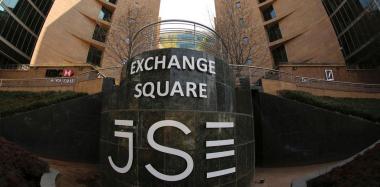Listed property firms might battle to increase rentals
 Most listed property players have experienced minimal rental growth and, in general, negative rental reversions when leases come to an end or for renewal.
Most listed property players have experienced minimal rental growth and, in general, negative rental reversions when leases come to an end or for renewal.
Despite appealing returns in the industrial real estate market, many listed property companies may struggle to translate these into higher rentals when leases come up for negotiation.
Data for last year from the Investment Property Databank showed South African industrial property achieved a total return of 14.2%. Of this, 4.2% was capital growth, and the remaining 9.6% income growth.
Much of the strong returns were achieved by a handful of listed property players.
“This return is certainly exceptional. However, from the perspective of listed property players that have industrial exposure, the industrial picture is mixed,” said Stanlib’s head of listed property funds, Keillen Ndlovu. “Most listed property players have experienced minimal rental growth and, in general, negative rental reversions when leases come to an end or for renewal.”
Mr Ndlovu said in terms of lease agreements, annual rental escalations were averaging 8% in the listed property sector. This percentage was about the same for the direct or fixed property market. However, there were concerns the overall market could slow down, with tenants locked into higher rents.
“If the market slows down, when you reach year five, the tenant could be paying higherthan-average market rents. So, when the lease expires, the rent may have to revert to market levels, that is the tenant’s rent has been going up by 8% per year, yet for example, market rents are growing at, say, 4% per year on average. This, of course happens when rental growth is slowing, like in the current environment,” he said. “Only a handful of players with prime industrial assets, such as SA Corporate Real Estate and Equites (Property Fund), have managed to retain positive rental reversions so far, but even these players expect some downside risks going forward as the economic outlook becomes more challenging,” Mr Ndlovu said.
Head of Ma’alot Investments Maurice Shapiro said he did not believe the industrial sector was about to enter a recovery phase. “We don’t manufacture much, so industrial property focused on manufacturing will continue to suffer. We do, however, have a strong logistics industrial space, but this will struggle if retail struggles,” Mr Shapiro said.
“I can’t foresee a strong demand for more warehouse space. We will most likely see the musical chairs that we see in the office space when developers will build a new logistics centre in a new prime location, such as on the N3 Modderfontein, and tenants will vacate the south of Johannesburg or Wynberg to fill that space. Location and newness of build is going to play a huge role,” he said.
Logistics assets could improve when e-commerce gained traction and more companies needed warehousing facilities.













